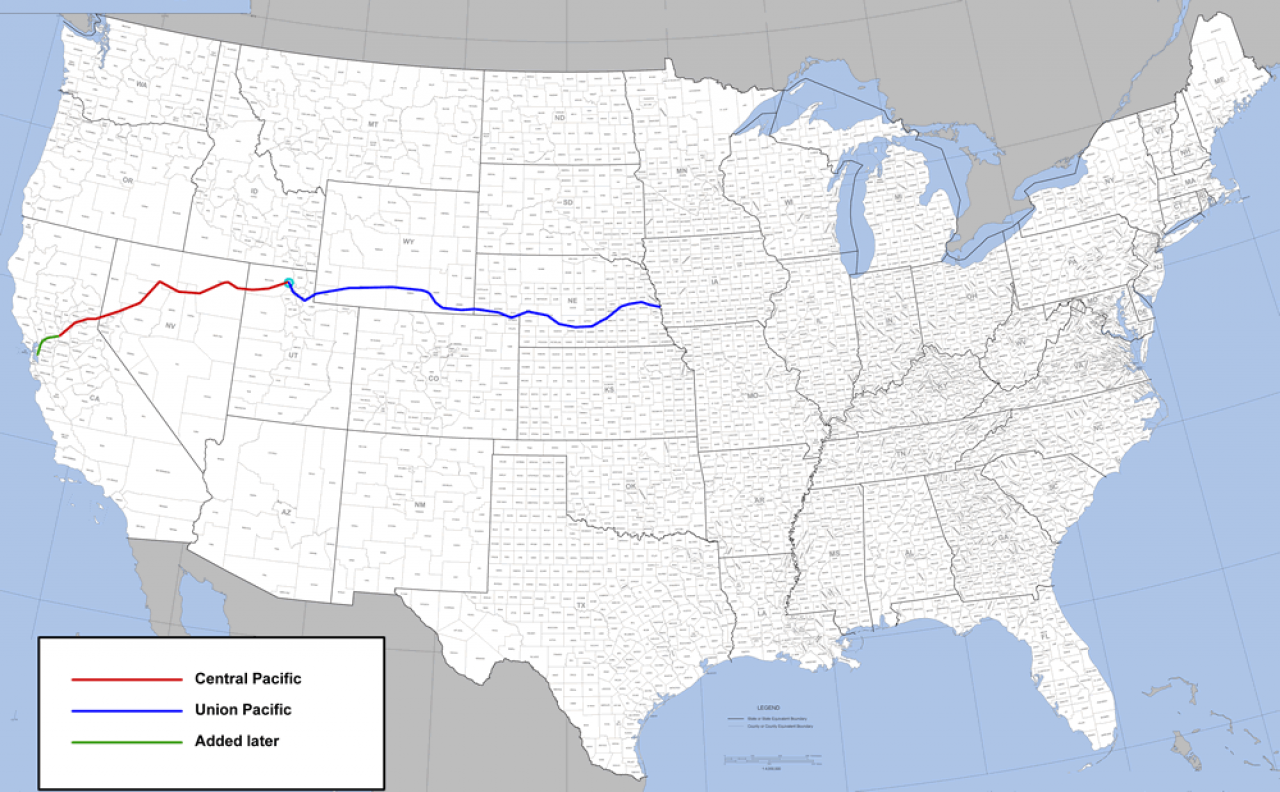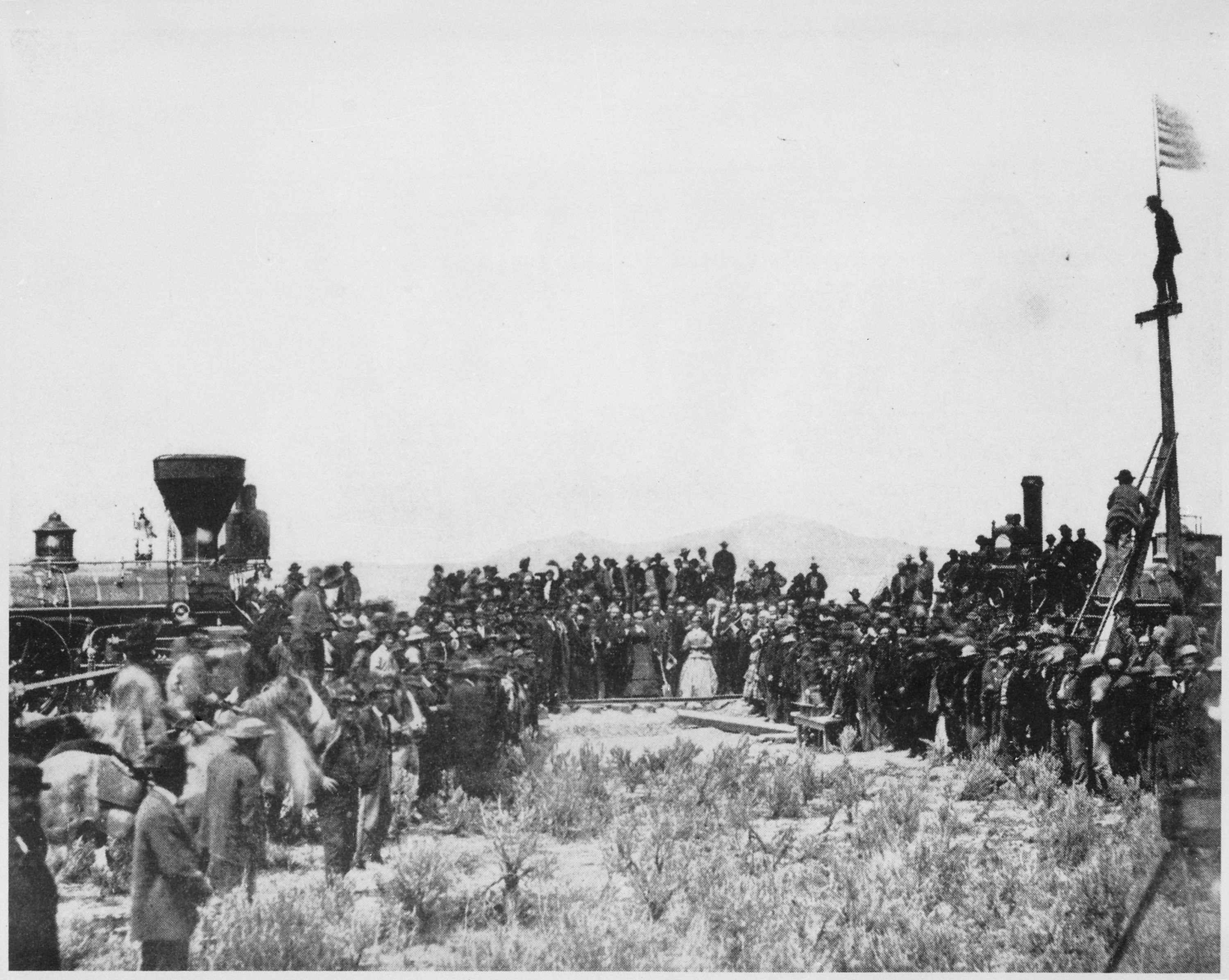The Transcontinental Railroad
One of the most significant technological achievements of the 19th century, the first Transcontinental Railroad—spanning the width of the United States—was completed May 10, 1869. The railroads were incredibly important to the country’s burgeoning economy and population. Settlers could, for the price of roughly $65, leave the crowded, bustling East Coast for the wide open […]

One of the most significant technological achievements of the 19th century, the first Transcontinental Railroads panning the width of the United States was completed May 10, 1869. The railroads were incredibly important to the country's burgeoning economy and population. Settlers could, for the price of roughly $65, leave the crowded, bustling East Coast for the wide open plains and spaces of the West. During the major emigrations of the early 1800's, traveling by foot or wagon was an arduous and dangerous prospect. Train travel was a far more affordable alternative.
The Transcontinental Railroad was formed by the meeting of the Central Pacific Railroad, coming east from Sacramento, California, and the Union Pacific Railroad, coming west from Council Bluffs, Iowa, met in Promontory, Utah, effectively creating a single route that connected United States from coast to coast.
The idea was not a new one. Forward thinking businessmen and engineers had brought up the idea as early as 1832: Dr. Hartwell Carter, a renowned businessman, published a proposal in a New York magazine, which he would later present to Congress in 1847.
Despite governmental support, the endeavor was not without its setbacks. In early 1863, when Central Pacific first began construction, the majority of their supplies tools, rails, spikes, cars, pretty much everything had to be imported, ironically, from the East Coast. Which meant, since there was no completed railroad, that everything had to be shipped by boat over 18,000 miles, sailing down around the southern most tip of South America to arrive in San Francisco Bay more than 200 days later. At the same time, those Eastern suppliers not to mention, Union Pacific were in the midst of the American Civil War, which rerouted supplies and men. Ultimately, Union Pacific wouldn't start construction on its end of the transcontinental connection until 1865, after the end of the war.
Route of the first American transcontinental railroad, completed in 1869. Route from Sacramento, California to Omaha, Nebraska. Original artwork by DanMS.[/caption]
Between 1865 and 1869, Union Pacific would lay 1,087 miles of track; Central Pacific would lay 690 miles. Workers from both companies met each other in spring of 1869, when their two routes merged near Ogden, in North Utah. A huge crowd gathered to see the ceremonial completion of the route, when the last four golden spikes were driven into place May 10, 1869.
Travelers and goods could now travel from New York to California in only a handful of days, as opposed to the months required by stagecoach or ship. Though nationwide train travel is not nearly as popular in the U.S. as it was in the 19th century (train travel is still a regular form of transport in Europe) parts of the original route are still in use today, both for passenger and cargo.

 Member Connect
Member Connect